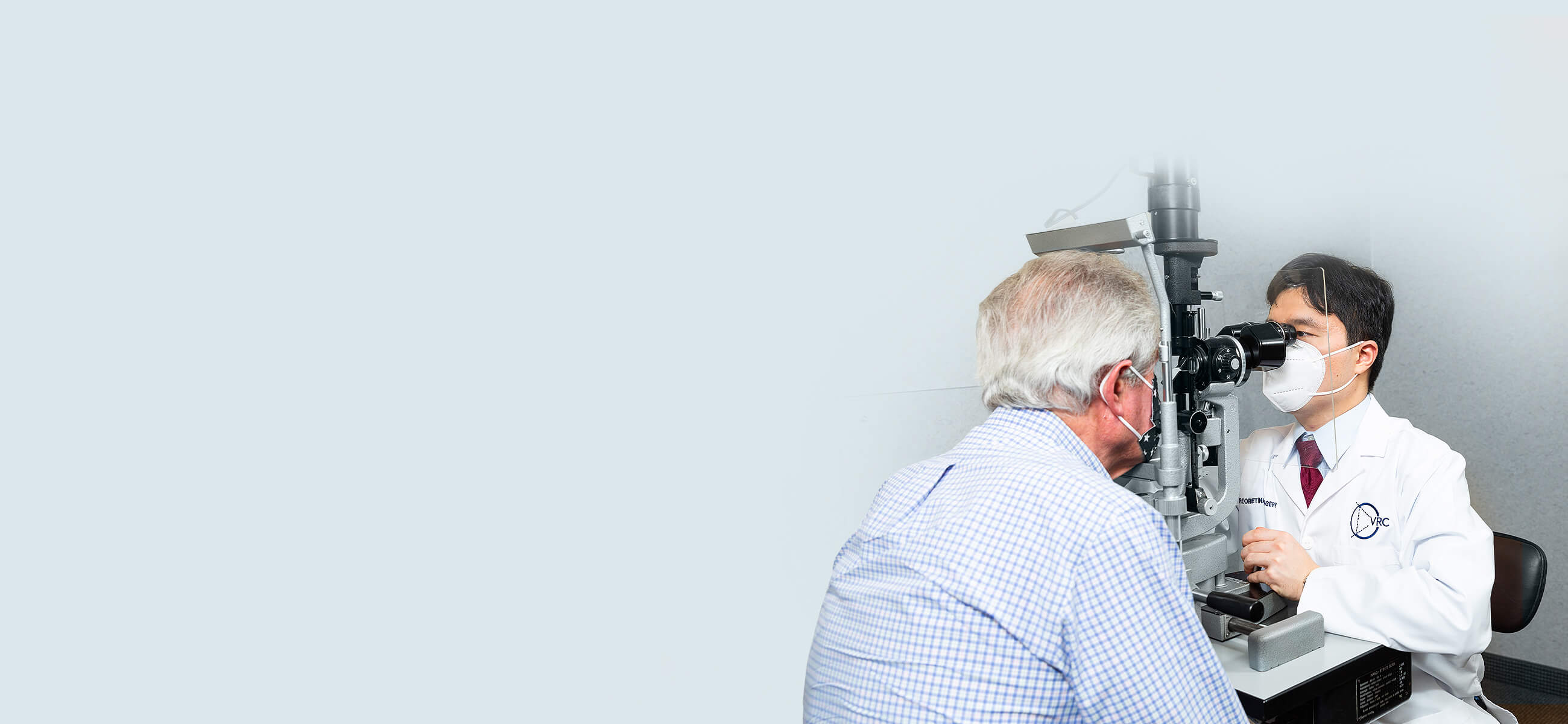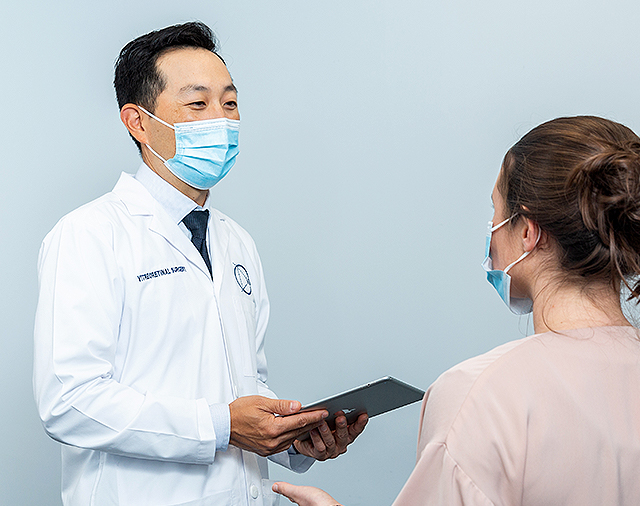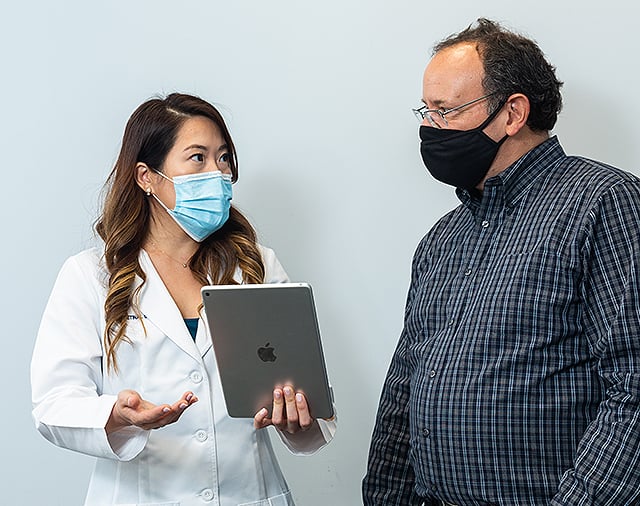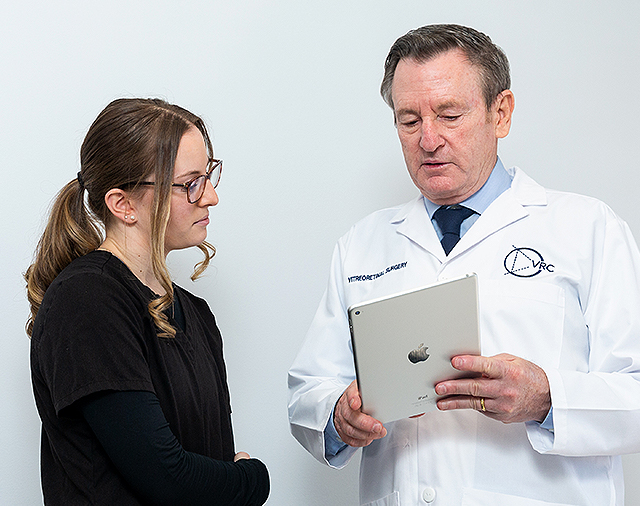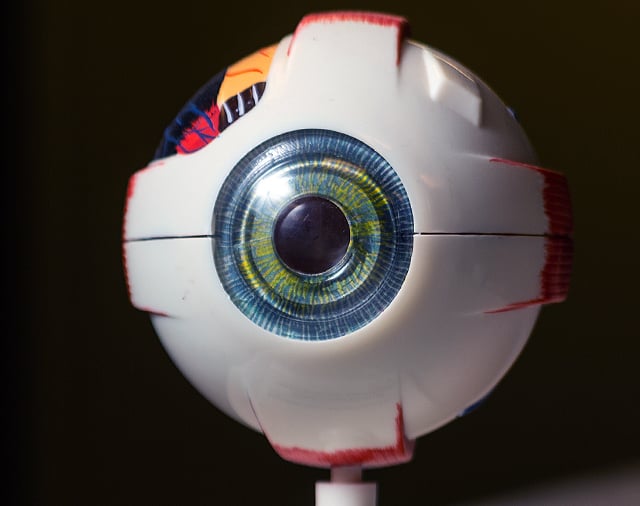Retinal Diagnostics & Testing
To ensure top quality eye care, your ophthalmologist will perform a full, comprehensive dilated eye exam. This examination will also include other diagnostic modalities to be performed to help accurately identify the location and severity of retinal disease.
Dilated Eye Exam
Amsler Grid Test
Optical Coherence Tomography (OCT)
Ultrasound
Fluorescein Angiography
Indocyanine Green Angiography
Autofluorescence Photography
Optomap Fundus Photography
Dilated Eye Exam
A dilated eye exam enables the doctor to examine the entire back part of the eye, which is where the retina is. Eye drops will be placed in your eyes, to enlarge the pupils which causes your eyes to become dilated. It takes approximately 15-30 minutes for the pupils to dilate. Once your eyes are dilated, your eyes will be more sensitive to light and you will experience blurry vision, especially with near vision. When the eyes are dilated, it takes about 4-6 hours for the dilation to wear off and the pupils to return to their normal size. If it is your first time receiving a dilated eye exam or you know your vision will be too impaired to drive home after the visit, bring an escort who can take you home after the visit.Amsler Grid Test
The Amsler Grid test is a black and white grid that allows the doctor to assess if you are experiencing distortion in your central vision. You will be asked if the lines on the grid appear broken or distorted to better identify and assess any retinal disease. For patients with age-related macular degeneration, an Amsler grid is provided to take home so that patients can self-monitor their vision at home.Optical Coherence Tomography (OCT)
An OCT is a non-invasive imaging test. By using light waves, an OCT can take a high resolution, cross-sectional image of your retina. This test is a remarkable imaging technique that helps the retinal specialist diagnose, treat and monitor various retinal conditions such as diabetic macular edema, epiretinal membranes and age-related macular degeneration.To obtain an OCT, you will sit in front of the OCT machine and rest your head on the chin rest. The machine will scan your retina without touching it and the images will be obtained. The imaging process can take a few minutes.
Ultrasound
An ultrasound of the eye allows the back part of the eye, including the vitreous, retina and choroid to be better viewed. It can help identify if there is blood in the back of the eye, a retinal or choroidal detachment, a foreign body or certain cancers in the back of the eye. The eye is numbed so you should not have any discomfort.Fluorescein Angiography
This test involves the use of a special camera and a dye to look at the blood vessels in the back of the eye. Once your eyes are dilated, you’ll sit in front of a camera. A dye called fluorescein is injected into the vein. The camera will then take pictures of your eye as the dye travels through the blood vessels in your retina and choroid. Fluorescein Angiography can be very useful to assess the health of your blood vessels and help diagnose the extent of diabetic retinopathy, and various other disease conditions that can damage the health of the retinal blood vessels such as macular degeneration, vein occlusions and ischemic ocular conditions.Learn about fluorescein angiography from Dr. Pamela Weber of VRC.
Indocyanine Green Angiography
This test is similar to fluorescein angiography except a different dye called ICG is used which is better at looking at the blood vessels in the choroid part of the eye.Autofluorescence Photography
Autofluorescence is another type of non-invasive photography of the retina that helps identify the severity of certain retinal diseases like macular degeneration. It is a test that helps determine how well the RPE (retinal pigment epithelium) is functioning by highlighting the accumulation of lipofuscin, which is a retinal pigment that can increase with retinal degeneration and or dysfunction.Optomap Fundus Photography
Optomap Fundus Photography is a camera system developed to take wide angle pictures of the retina. It is non-invasive. OFP produces a 200 degree color view of the back of the eye for studying retinal diseases. No dilation is required.Choose Vitreoretinal Consultants of NY for Retinal Diagnostic & Testing in New York
At Vitreoretinal Consultants of NY, we are dedicated to providing exceptional retinal care to patients across the Greater NYC Metropolitan Area, including Queens and Manhattan, as well as Nassau, Suffolk, Rockland, and Westchester counties. For us, nothing is as important as your eyesight. Contact us with any questions, or schedule an appointment with VRC today.


